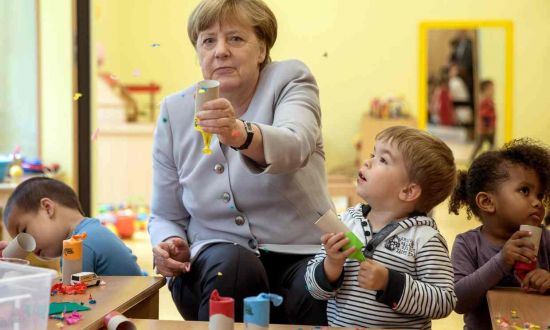Fertility rate in Germany rises to 33-year high
 The fertility rate in Germany has risen to a 33-year high in a sign the country has turned a corner after years of decline in the rate of births. The fertility rate in Germany has risen to a 33-year high in a sign the country has turned a corner after years of decline in the rate of births.
In 2015 the fertility rate in Germany was 1.5 children per woman – 56 newborns per 1,000 women more than in the previous year. The last time authorities recorded a similar rate was in 1982.
No country in the world has had as prolonged a period of sub-1.5 fertility rates as Germany – a trend that dates back to 1975 in the former west of the country. In the old east, birthrates dropped off a cliff after reunification in the 1990s, leading to Germany being nicknamed “the land without children”.
Recent statistical findings show women in the country are having more children than those in Mediterranean countries such as Greece, Italy or Spain.
The rate still falls short of the replacement rate of 2.1 children per woman. According to projections published last April, Germany’s population is expected to decline by about 10 million people by 2060, meaning the country would be home to between 68 and 73 million inhabitants, compared with its current 81 million.
Immigration was a key factor in Germany’s reversal of the declining rates of the 1990s. Among women with German citizenship, birthrates rose from 1.42 to just 1.43 in the years 2014 to 2015. For women with non-German citizenship based in Germany, however, rates in the same period rose from 1.86 to 1.95.
But migration alone does not explain the current trend. Saxony, for example, has been the German state with the highest birthrate in the country since 2007, when the east of the country overtook the west in terms of children per woman, even though Saxony has one of the lowest rates of foreign-born inhabitants in the country.
Europe needs many more babies to avert a population disaster
Read more
In Berlin, where almost every third inhabitant has a multicultural background, the birthrate has flatlined over the past two years.
According to Martin Bujard of the Federal Institute for Population Research, the most important driver in the recent trend reversal has been a series of childcare reforms. “When it comes to childcare for the under-threes, eastern Germany always had a lot more to offer,” he said.
“Tripling the number of childcare places over the last 15 years has played a central role in allowing women to combine work and family, especially in the former west. It has guaranteed that fertility rates would have started to rise even if you factor out migration.”
Germany’s birthrate is significant because it is seen as an important factor in the rationale behind key policy decisions in Europe’s biggest economy in recent years. The irresponsibility of burdening shrinking future generations with debt is a frequently cited argument by German advocates of fiscal discipline, while concerns about demographic decline have changed the political discourse around immigration.
“Germany is in a better position than it was in the noughties, but only marginally so,” said the economist Olga Pötsch of the Federal Statistical Office. “But we aren’t going to magic away the baby boomers any time soon.”
In order to compensate for low birthrates in the late 90s and early noughties, Pötsch argued, Germany would require a birthrate of about 2.5 to 3 in order to avert future demographic imbalances.
(Source: theguardian) |